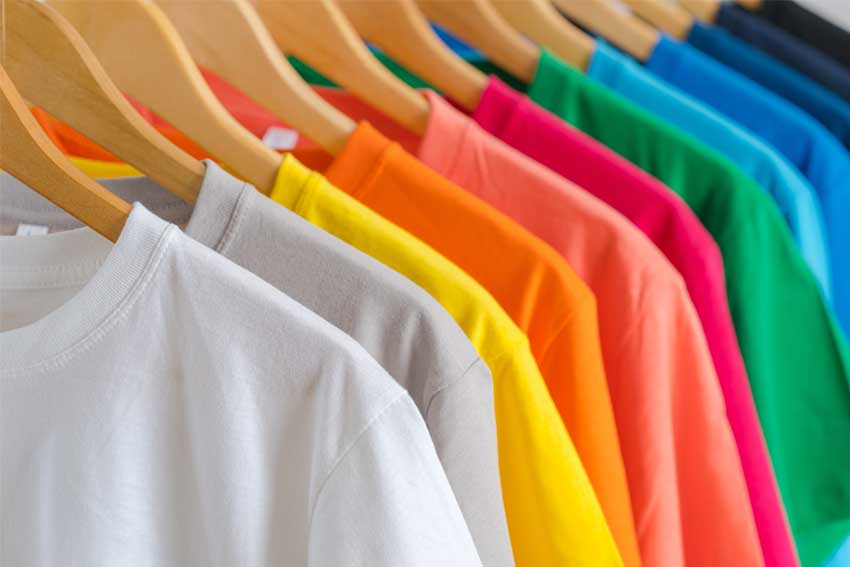What Colors Look Good On Me Quiz
This colorimetry test is not at all restrictive and you have every right to have fun with colors other than those of your season.
This 9 Questions test is only meant to show you the colors that suit you best.
Feel free to vary the colors, patterns, cuts and textures of your clothes and accessories as you see fit.
Advertisement

What Color Suits Me?
Does your face light up when you are near warm or cool (blue-based) colors? Are intense, contrasting colors preferable to pastel tones? Are you a spring or fall person?
Determining the type of colors that best suit your complexion is the objective of the colorimetry test.
The result will help you in your future shopping sessions. But also for your make-up with the most suitable eye shadow, blush and lipstick colors. Not to mention the color of your hair (if you dye it). And even the colors of your earrings, necklaces and hair accessories.
There are 2 types of color categories: there are warm colors and cool colors.
The difference lies in the degree of yellow or blue (or white) contained in the color. If the color tends more towards yellow than blue/white: it is a warm color. And vice versa.
For example, the red that we could systematically associate with a warm color can also be a cool color. A burgundy that contains a touch of blue for example.
If you have a dark skin, mixed or matte, the warm tones will be more flattering. For example, orangey reds, bright pinks and bright yellows will flatter your complexion.
This is also the case with shades of brown. However, just because you have pale skin doesn’t mean you can’t wear warm shades. You just need to be careful about the shades you wear.
For example, if you have pale skin, you can wear pink. You just need a pink with a white undertone, like powder pink or fuchsia, not a salmon pink that will turn your complexion yellow. Cool colors are indeed more suitable for light skin. Thus, it will be perfectly appropriate to choose a top in a shade of light blue or gray.
How to determine if you have a warm, cool or neutral complexion?
Here are several ways to determine the undertones of your skin tone.
The first method is to look at the veins on your wrists. If they are green, you are more likely to have a warm complexion. If they are blue, you have a cool complexion, and if they are a mixture of both, you have a neutral complexion.
The second method is to determine whether gold or silver looks best on you. If gold makes you look more beautiful, if your skin looks brighter with gold than with silver, then it means you have a warm complexion. Conversely, if silver makes your skin look more radiant, then you have a cool complexion. And if both suit you, then you have a neutral complexion.
Finally, you can test if white or off-white suits your complexion better: if it’s white, you probably have a cool complexion, if it’s off-white, a warm complexion.
The eyes
What we are interested in when eye makeup is to put them forward, to make them stand out.
To bring out the color of these eyes, we must use its complementary color.
Colorimetric reminder :
There are 3 primary colors: red, yellow and blue. From the mixture of these three colors come the secondary colors, orange, green and violet, and from the mixture of the latter come the tertiary colors.
All the colors can be sorted in a color wheel (I learned that it was the “color wheel” in primary school, if you want to give it a less complicated name).
If you have blue eyes, you must choose the complementary color of blue, which corresponds to the color that is exactly opposite blue in the color wheel, i.e. orange.
In fact, we choose variations of orange, like gold, copper or bronze.
For green eyes, we do exactly the same thing, we look at the color just in front of the green, i.e. purple. We can therefore choose plum and burgundy tones to highlight green eyes.
As for brown eyes, everything goes to them, but to highlight them we can choose dark purple or midnight blue shades.
The 4 seasons of colors
To find the palette that suits you best, you must first analyze the color of your skin, your eyes and your hair.
To make a correct analysis, it is necessary to be without makeup, not tanned and with a natural hair color.
First of all, you need to determine whether you belong to the warm or cool colors.
Winter and summer are cool seasons, while fall and spring are warm seasons. This classification is made on the basis of the light that emerges at different times of the year and the predominant colors in each season.
Colorimetry takes into account 4 factors:
-Skin tone
-Chromatic value
-Intensity
-Contrast
Skin tone undertone (warm or cool)
The undertone is the temperature of the skin and can be:
-Warm, if the skin tans easily and the wrist veins are green.
-Cool, if the skin tans with difficulty and the veins are blue.
In general, in the case of a warm undertone, one will be highlighted by the warm shades of gold, while if the undertone is cool, one will be highlighted by the tones of silver.
Chromatic value (light or dark)
This is the tone of the skin, eyes and hair, which determines the intensity of the colors to use. If, for example, you have light skin, eyes and hair, the color value will be light, otherwise it will be dark.
Intensity (high or low)
This is the saturation of the color. Which means, the extent to which a color is full and rich. In this case, we will have strong, vivid hues on one side and softer, lighter hues on the other.
Contrast (high or low)
This is the degree of contrast between the skin, eyes, hair. Contrast will be high for light skin with very dark eyes and hair and low for medium skin and medium brown hair.
When you have a high contrast, you should opt for intense color contrasts, such as black and white. If, on the other hand, the contrast is low, tone-on-tone combinations, without large gaps, are to be preferred.
Based on these variables, people can be classified into four categories (seasons): Winter, Spring, Summer and Fall. Each season is further divided into subgroups, according to its dominant chromatic characteristic.


